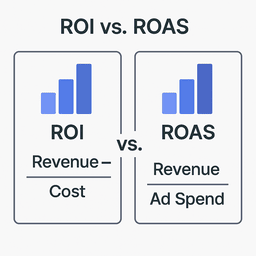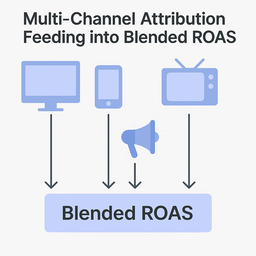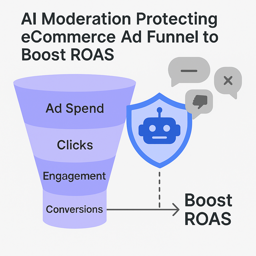December 4, 2025
A data-backed breakdown of the real comment patterns driving ad performance in 2025.
Aug 19, 2025
10 min
Discover how AI moderation can protect your brand, cut wasted ad spend, and boost ROAS with smart, scalable strategies for CEOs and performance marketers.

As a CEO, founder, or performance marketing leader, your growth mandate is simple but unforgiving: make every ad dollar work harder. That means one thing—boost ROAS. In today’s digital landscape, competition for attention is relentless, costs per click are rising, and consumer expectations for brand engagement have never been higher. Simply pumping more money into ads is no longer enough.
The leaders winning in 2025 aren’t just optimizing bids and creatives—they’re layering AI moderation into their ad ecosystems to eliminate inefficiencies, protect brand reputation, and accelerate customer engagement. Think of it as the difference between piloting a race car blindfolded and driving with a real-time dashboard and copilots.
In this article, you’ll learn:
By the end, you’ll have a blueprint not just for short-term wins, but for building a scalable, AI-powered ROAS growth engine.
Return on ad spend (ROAS) is your revenue-to-ad-spend ratio. While ROI accounts for all costs and profits, ROAS is laser-focused on marketing efficiency. CEOs often conflate the two, but separating them allows for precise visibility into what’s working in your marketing mix.
Example: If you spend $10,000 on ads and generate $40,000 in revenue, your ROAS is 4:1. But ROI could look very different once you add fulfillment, payroll, and overhead.
Forward-looking companies increasingly adopt LTV-adjusted ROAS to ensure growth strategies align with long-term profitability.

Benchmarks vary. Shopify data shows most eCommerce brands consider 4:1 a healthy ROAS, but industries with high margins (like software) may thrive at 2:1, while low-margin verticals (like grocery) may need 6:1.
Instead of chasing arbitrary “good ROAS” numbers, align targets with:
The smartest leaders set ROAS ranges per campaign type (prospecting vs retention) instead of one company-wide number.
Retention is a ROAS multiplier. It’s cheaper to re-sell to an existing customer than acquire a new one.
Google and Meta platforms punish inefficiency. Smart use of negative keywords avoids wasted impressions.
Example: A DTC mattress brand targeting “luxury king mattress” shouldn’t pay for clicks from “free mattress giveaway.” This alone can lift ROAS by 15–20%.
AI-based audience tools allow you to build lookalike audiences not from all customers, but from your most profitable cohorts. This unlocks smarter acquisition.
As cookies phase out, first-party data is the CEO’s competitive moat. Using CRM, purchase history, and engagement data:
Ad fatigue is silent ROAS erosion. Data shows CTR can fall by 60% after two weeks without creative refreshes.
Solution: Build creative pipelines where every campaign tests 3–5 variations simultaneously.
AI platforms now predict winning creatives before spending budget. Machine learning evaluates historical patterns (colors, CTAs, audience resonance) and prioritizes assets likely to yield higher ROAS.
Platforms like Google Ads already use smart bidding. But layering AI moderation ensures spend is continuously aligned with business rules—pausing underperforming campaigns, reallocating budget to top performers, and flagging anomalies in real time.
Here’s where AI moderation shines:
Unique Insight: Traditional ROAS playbooks ignore the role of social engagement. In reality, unchecked negative comments can reduce ROAS by up to 25%. AI moderation is the missing link between ad spend and brand perception.
Ad clicks mean nothing if the landing page underperforms. Ensure:
Chatbots reduce bounce by answering FAQs instantly. Combined with A/B testing on CTAs, you can systematically raise conversion rates by 20–40%—a direct boost to ROAS.
Instead of siloed Google vs Meta vs TikTok reporting, track blended ROAS across channels. This prevents double-counting or under-crediting conversions.
Attribution windows differ. A 7-day click may inflate Meta’s contribution but understate Google’s. CEOs need multi-touch attribution models to see the true ROI of each platform.

Email still delivers 36:1 ROI. SEO content compounds free acquisition over time. Both reduce reliance on paid ads, lifting blended ROAS.
Referrals lower CAC. Subscriptions stabilize revenue. Loyalty programs deepen LTV—all three amplify ad efficiency.
Holiday campaigns, back-to-school, or product launches often yield higher ROAS when budgets shift to align with consumer intent spikes.
Serving ads during peak purchase windows (e.g., evenings for DTC skincare) reduces wasted spend.
Scaling into regions with lower CPMs can lift global blended ROAS by 20–30%.
Don’t over-rely on Meta. TikTok, Pinterest, and LinkedIn offer untapped arbitrage for high-ROAS campaigns.
Dashboards that track ROAS daily vs monthly allow faster pivots. Layer AI anomaly detection for predictive budget shifts.
Quarterly audits often uncover 10–15% budget misallocation. CEOs should demand regular ROAS audits across all campaigns.
Imagine your funnel as a series of pipes. AI moderation ensures every leak (negative comments, brand-safety risks, slow responses) is sealed—keeping more of your ad dollars flowing to revenue.

Future growth won’t be siloed between “ad buyers” and “customer care.” AI moderation merges the two, transforming engagement into ROAS gains.
Boosting ROAS is no longer about tweaking bids—it’s about holistic optimization powered by AI. From smarter targeting and creative testing to anomaly detection and AI moderation, the leaders separating themselves from the pack are those embracing automation at every level of the funnel.
Unchecked negative comments, inefficient spend, and siloed reporting silently erode returns. But with AI moderation and multi-channel strategy, your team can transform customer engagement into measurable profitability.
As a CEO, founder, or performance marketing executive, your job is to ensure ad spend isn’t just an expense—it’s a growth engine. The strategies here offer a blueprint not only for hitting quarterly ROAS targets but for building a scalable, defensible system that compounds over time.
Next step: Audit your ad ecosystem for leaks. Where are comments going unanswered? Where is budget misallocated? Where are creatives underperforming? Seal the gaps with AI, and watch your ROAS accelerate.
Q1: What’s a good ROAS for eCommerce?
A 4:1 ratio is generally strong, but it depends on margins and LTV.
Q2: How can AI moderation improve ROAS?
By filtering negative comments, protecting brand reputation, and engaging customers instantly—improving click-through and conversion rates.
Q3: What’s the difference between ROI and ROAS?
ROI accounts for all costs; ROAS focuses only on ad spend efficiency.
Q4: Can ROAS be improved without increasing ad spend?
Yes—through retention, SEO, loyalty programs, and creative testing.
Q5: What’s blended ROAS?
It’s the total return across all ad platforms, preventing siloed reporting biases.
We’d love your input: Which ROAS tactic has worked best for your business? Drop a comment or share this article with your network so we can learn from each other’s strategies.

Explore expert tips, industry trends, and actionable strategies to help you grow, and succeed. Stay informed with our latest updates.